- Home
- Jacob Grimm
The Juniper Tree and Other Tales
The Juniper Tree and Other Tales Read online
JACOB AND WILHELM GRIMM
THE JUNIPER TREE
AND OTHER TALES
Translated from the German by
Anthea Bell
PUSHKIN PRESS
LONDON
CONTENTS
Title Page
Translator’s Foreword
The Boy Who Set Out to Learn What Fear Is
The Wolf and the Seven Little Kids
Little Brother and Little Sister
The Three Little Men in the Forest
The Fisherman and his Wife
Ashypattle
Mother Holle
The Seven Ravens
Little Red Cape
The Tailor and his Three Sons
The Robber Bridegroom
The Juniper Tree
King Throstlebeard
The Coat of Many Furs
The Singing, Springing Lark
The Goosegirl
Bearskin
The Poor Miller’s Boy and the Little Cat
The Blue Lamp
One-Eye, Two-Eyes and Three-Eyes
Snow-White and Rose-Red
Copyright
TRANSLATOR’S FOREWORD
Jacob Grimm (1785–1863) and his brother Wilhelm (1786–1859), were born in Hanau, the two eldest surviving children in a large family whose father, a lawyer, died when Jacob was only eleven. By then the Grimms had moved to their mother Dorothea’s home town of Kassel, where the brothers went to school. They went on to Marburg University, intending to study law, but soon found that their special interests lay in the study of the German language and old German literature. Both brothers became first librarians, then university professors. Only Wilhelm was ever married, to a friend of their youth called Dorothea Wild, Dortchen for short, and much of the time Jacob lived with his brother and sister-in-law.
All their lives the Grimm brothers worked closely together. They began collecting the famous Kinder-und Hausmärchen (Children’s and Household Stories) quite early, originally at the request of their friend, the poet Clemens Brentano. Brentano and his brother-in-law Achim von Arnim had collected and published a famous collection of German folk songs, Des Knaben Wunderhorn (The Boy’s Magic Horn), familiar to us today from Mahler’s later settings of some of the texts, and an interest in old songs, legends and stories was an outstanding feature of the Romantic movement of the time. In the end the Grimm brothers published the tales themselves, and the first volume of the first edition dates from 1812, with a second volume published a couple of years later. They continued to work on the tales for many years, and the seventh edition, published in 1857, is generally regarded as the standard text. It has been used for this selection of stories. Jacob was also a noted linguist, studying the phonology of the German language and its early consonant changes, while Wilhelm came to take on most of the editorial work on the tales. They also collaborated on the compiling of a vast German dictionary, completed after their deaths by other scholars.
This selection is a personal choice, and I have left out some of the most familiar stories, such as Snow White and Hänsel and Gretel, in order to include several less well-known tales. But essential in any selection are the two fine stories (in Low German dialect in the original text) contributed by the Romantic painter Philipp Otto Runge, The Fisherman and his Wife and The Juniper Tree. The latter transports the savage theme of a child killed, cooked and eaten, ultimately deriving from the ancient Greek myth of the House of Atreus, to a bourgeois German setting, and is often supposed to be too horrific for children, although the Grimms’ title of ‘children’s and household tales’ makes it clear that the stories were not necessarily all meant for children in the first place. In any case, there’s a happy ending, and I have heard a child of seven, who found it in a Victorian translation, retell it to me as one of the best stories he had ever read.
The Juniper Tree is not the only story to contain an ancient classical theme—or rather, the Greek and Latin classics contain elements of folk tale. The Grimms’ version of the huge ‘Cinderella’ group of tales contains an episode where the heroine must pick lentils out of the ashes, first recorded by Apuleius in The Golden Ass of the second century ad, where it occurs in the story of Cupid and Psyche. Ashypattle here (Aschenputtel in German) is recognizably the Cinderella story best known to us (and to the pantomime tradition) from Perrault’s courtly version, but with some different features: the heroine is more self-reliant in her sad plight, calling on the birds of the air for help with the lentils, and tending the tree on her mother’s grave from which a dove throws down three beautiful dresses for her to wear to the King’s court on successive evenings. The Coat of Many Furs is another of the Cinderella group, with a strong theme in that the heroine must run away from home to escape the imminent threat of incestuous rape by her father. Certain tales included in the first edition of the Tales were later removed for showing too much literary influence, so in later editions there was no Puss in Boots or Bluebeard, although The Robber Bridegroom, translated here, is a variant of the Bluebeard theme. Some of the features of Beauty and the Beast, again best known to us in a courtly French version by Mme Leprince de Beaumont (and also based on the Cupid and Psyche story), appear here in The Singing Springing Lark.
The stories had been current in oral versions, passed on by successive generations of storytellers, for a long time before anyone thought it worthwhile to write them down and thus fix them in recorded versions. One of the first collectors was Giambattista Basile in seventeenth-century Italy; the Grimms took a great interest in his collection, the Pentamerone. The heyday of collecting from oral sources, however, was the nineteenth century. The Grimms did not go around visiting rustic storytellers themselves; they lived some decades before those composers and scholars—the names of Vaughan Williams, Cecil Sharp and Percy Grainger spring to mind—who went out collecting folk songs in the field with early devices capable of recording the human voice. But some of their particularly good sources came to visit them. One was a tailor’s widow called Dorothea Viehmann, who used to come into Kassel to sell produce from her garden, and whose father had been an innkeeper; she had probably heard old stories told in his establishment in the evenings. Another was an old soldier, Johann Friedrich Krause, who told the Grimms stories in exchange for old clothes. Many of the stories, however, came to them at one remove from the oral tradition, from young women among their circle of friends who had heard them from their nursemaids or other household servants. One of these young women was Dortchen Wild, Wilhelm’s future wife; others were the sisters of Ludwig Hassenpflug, who married the Grimms’ only sister Lotte in 1822. Jacob’s friend Werner von Haxthausen, who shared his interest in folklore, and his sisters provided others.
On the whole the Grimms edited the tales that they collected in a remarkably scrupulous way. Modern readers cannot help noticing the addition of pious Christian references to a number of them; it is likely that this was mainly Wilhelm’s doing, since we know that he asked his younger brother Ludwig, an artist who was the first illustrator of fifty of the tales, to add pictorial details such as a Bible on a table. These additions can sometimes be obtrusive, and I have not included here, for instance, The Girl with No Hands, where a veneer of piety is given to a particularly savage story: to save her father from the Devil, the heroine must let him chop off her hands, although as a reward for virtue she is protected by an angel and grows new hands.
A pact with the Devil in Bearskin, however, one of ten Grimm tales about soldiers (from various sources, not only the retired soldier Krause), is mined from a different seam of tradition. The archetype is the legend of Faust and his bargain with Mephistopheles, memorably dramatized first by Marlowe and then by Goethe, but th
e Evil One is just as keen to acquire the soul of the humble soldier in this folk tale. The hero, dismissed from the army penniless once the wars are over, is well aware of the risks he runs but succeeds in outwitting the Devil, to be rewarded with marriage to the daughter not, for once, of a king but of a prosperous bourgeois citizen whose fortune he has previously restored. Elements of boisterous farce were associated with the Devil in medieval German tradition, and we have a hint of that here when he turns up at the end to congratulate himself on winning not one but two human souls—those of the heroine’s sisters, who commit suicide and seem to pass entirely unmourned.
A number of the stories clearly derive from very ancient magical themes. Mother Holle is originally an old Germanic nature goddess who makes the snow fall. The Goosegirl is full of mysterious taboos—do the three drops of blood on the white cloth represent a menstruation taboo, why is an oath sworn “under the open sky” so binding, what prohibition exactly allows the heroine to tell her troubles to the stove but not directly to any human being? She herself is a mistress of wind magic, calling up winds to blow away the hat of the boy who pesters her.
All the themes and motifs of folk tale and fairy tale were classified in the first half of the twentieth century by two scholarly folklore experts, Antti Aarne of Finland and Stith Thompson of the United States, and are listed in a work known as the Aarne-Thompson index. As even a glance at the handful of stories in this selection shows, folk tales combine these themes and motifs again and again in different ways, yet somehow from tale to tale they appear both familiar and fresh. While it took the Romantic movement to make them respectable as works of literature and subjects for study, their echoes resonate in much earlier works. Proverbially, you can find almost anything you like in the Bible and Shakespeare, and the story of Jephthah’s daughter in the Old Testament is a common folk-tale theme, represented here by the opening of The Singing Springing Lark. Of the plays of Shakespeare, King Lear is particularly rich in references to folklore. The plot itself begins with a version of the Cinderella story, the one in which the heroine’s sisters make extravagant professions of love for their father, while she herself protests that she loves him as bread or meat loves salt—that is to say, in the right way for a daughter to love her father. Edgar, in his pretended madness, rants, ‘Childe Rowland to the dark tower came, His word was still, Fie, foh, and fum, I smell the blood of a British man.’ And one at least of his snatches of song, ‘Sleepest or wakest thou, jolly shepherd? Thy sheep be in the corn,’ sounds very much like an early version of the nursery rhyme Little Boy Blue.
Magic is not an essential in folk tales such as those collected by the Grimms, and The Robber Bridegroom, included here, has none, but features an intrepid heroine and a plot building up to a dramatic revelation of her would-be bridegroom’s true nature. This tale is known in English as Mr Fox and Lady Mary, a very close parallel to the German story. It is the “old tale” to which Benedick in Much Ado About Nothing refers in his line, ‘Like the old tale, my lord; It is not so, nor ’twas not so, and indeed, God forbid it should be so.’ The Grimms’ version also contains the interesting feature of an alliance between the young bride and the old woman who helps her to escape and goes with her. Folk and fairy tales are sometimes said to be anti-feminist, but it appears to me that if you read them without prejudice, you find that about half the time it is the heroine who takes the initiative—unmasking a villain, climbing the glass mountain to rescue her brothers (in The Seven Swans), or her lover, whose memory of her usually has to be revived—and about half the time seems right.
Once these tales were written down, they showed scope in the nineteenth century for adaptation. Snow-White and Rose-Red (no relation to Snow White and the Seven Dwarves) is a story that I enjoyed as a child; I liked the fact that the two sisters are fond of each other. But in fact sisters in folk and fairy tale have no business liking each other; typically we have one good and one bad sister, or one good and two bad. This story, although included by the Grimms—surely with some extra touches of piety added in the editing—seems to be a kind of transitional stage, making the traditional tale into a more conventional type of nineteenth-century moral story designed to edify. Also in the nineteenth century, the Kunstmärchen, the “art” or “literary” fairy tale flourished, for instance in ETA Hoffmann’s story of The Nutcracker and the Mouse King, and the genre continues to this day in works of fantasy that sometimes hover on the borderline between children’s and adult literature. Authors who may well draw on traditional themes are now known and named. Particularly famous is Hans Christian Andersen, and the traditional Scandinavian equivalent to another of the Grimms’ soldier tales in this selection, The Blue Lamp, stands behind Andersen’s first story, The Tinder Box of 1835. Folk and fairy tales live on, even if not so often now in oral tradition, but they still owe a debt to the Grimms and other international collectors who published the traditional tales.
ANTHEA BELL 2011
THE BOY WHO SET OUT TO LEARN WHAT FEAR IS
THE BOY WHO SET OUT TO LEARN WHAT FEAR IS
ONCE UPON A TIME there was a man who had two sons. The elder son was clever and handy, and did everything well, but the younger son was a simpleton who couldn’t seem to learn anything at all. When they saw him people used to say, “Ah, his poor father’s going to have trouble with that one!”
Whenever there was a job to be done the elder boy had to do it, but if his father sent him to fetch something late in the evening, or at night when it was dark and he would have had to pass the churchyard or some other eerie place, he said, “No, Father, I’m not going that way. It makes my flesh creep!” because he was afraid. And when stories fit to make you shudder were told around the fire in the evening, those who heard them would sometimes say, “Ooh, that really scares me!”
The younger boy, sitting in a corner and listening, didn’t understand what they meant. “People are always saying, ‘Ooh, it makes me shudder with fear!’ or ‘It makes my flesh creep,’” he said. “But I don’t know what fear is—it must be some kind of clever trick that I don’t understand.”
One day his father said to him, “Listen, you there in the corner, you’re growing big and strong. It’s time you learnt a trade so that you can earn your own living. Just see how hard your brother works—but as for you, you’re a hopeless case.”
“Oh, Father, I’d be happy to learn a trade,” said the boy. “In fact what I’d really like to learn is how to shudder with fear. I haven’t the slightest idea how to do it.”
The elder son laughed when he heard that, and thought: Dear me, what a fool my brother is! Well, he’s been simple from birth, and he’ll never amount to anything.
The boy’s father sighed and replied, “Oh, I’m sure you’ll learn what fear is soon enough, but that won’t earn you a living.”
Soon after that the church sexton came visiting, and the boys’ father poured out his troubles and told him what a simpleton his younger son was. He knew nothing and would learn nothing, said the father. “Guess what, when I asked him what trade he’d like to learn, he said he wanted to learn to shudder with fear.”
“If that’s all,” said the sexton, “he can learn what fear is from me. Send him along and I’ll soon teach him.”
The father was glad to hear it, thinking that at least the sexton would lick the boy into shape. So the boy went home with the sexton, who gave him the job of ringing the church bell. After a few days the sexton woke him at midnight and told him to get up, climb the church tower and ring the bell. You’ll soon learn what fear is now, he thought, going ahead of him in secret. And when the boy reached the top of the tower and turned round to take hold of the bell rope, he saw a figure all in white standing at the top of the stairs opposite the belfry window.
“Who’s there?” called the boy, but the figure gave no answer and didn’t move.
“Come on, either tell me who you are or get out,” said the boy. “You’ve no business up here by night.”
But the s
exton just stood there perfectly still, to make the boy think he was a ghost.
“What are you doing here?” asked the boy for the second time. “Speak up if you’re an honest fellow, or I’ll throw you down the stairs.”
He doesn’t really mean it, thought the sexton, so he made not a sound and went on standing there as if he were carved from stone.
So the boy asked him what he was doing for the third time, and when there was still no answer he took a run-up and pushed the ghost downstairs. It fell ten steps, landed in a corner and lay there. After that the boy rang the bell, went back to bed without a word to anyone, and fell asleep again.
Meanwhile the sexton’s wife waited and waited for her husband, but he didn’t come home. At last, feeling alarmed, she woke the boy and asked, “Do you know where my husband is? He climbed the tower ahead of you.”
“No, I don’t,” said the boy, “but there was someone standing on the stairs opposite the belfry window, and since he didn’t answer when I spoke to him and wouldn’t move, I thought it was some rascal up to no good and pushed him down the steps. Go and look, and if it’s your husband then I’m sorry.”
The sexton’s wife hurried off and found her husband lying in a corner of the staircase, moaning. He had broken a leg. She carried him down the tower and went off to see the boy’s father, complaining angrily.
“Your son has done a shocking thing,” she said. “He threw my husband down the stairs so that he broke his leg. Get that good-for-nothing out of our house!”
The horrified father went round to the sexton’s house and scolded the boy. “What sort of trick was that? The Evil One must have put it into your head.”
“No, Father, please listen to me,” said the boy. “I’m perfectly innocent. He was standing in the dark like someone up to no good, and since I didn’t know who he was I asked him three times to speak or go away.”

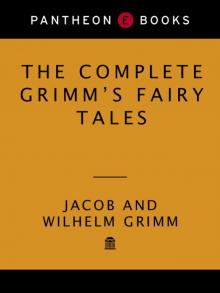 The Complete Grimm's Fairy Tales
The Complete Grimm's Fairy Tales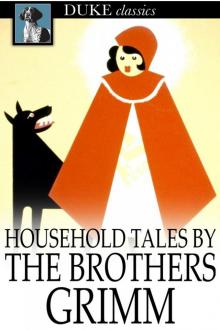 Household Tales by the Brothers Grimm
Household Tales by the Brothers Grimm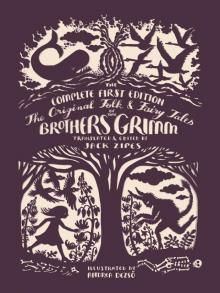 The Original Folk and Fairy Tales of the Brothers Grimm
The Original Folk and Fairy Tales of the Brothers Grimm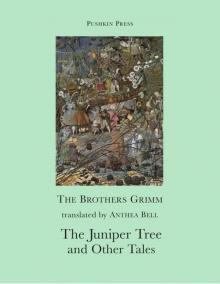 The Juniper Tree and Other Tales
The Juniper Tree and Other Tales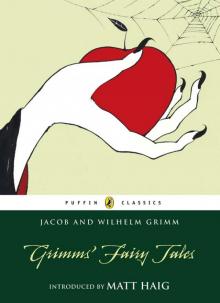 Grimms' Fairy Tales
Grimms' Fairy Tales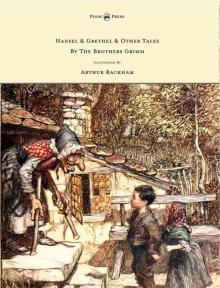 Hansel & Grethel - & Other Tales by the Brothers Grimm
Hansel & Grethel - & Other Tales by the Brothers Grimm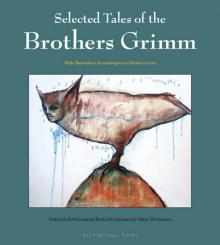 Selected Tales of the Brothers Grimm
Selected Tales of the Brothers Grimm